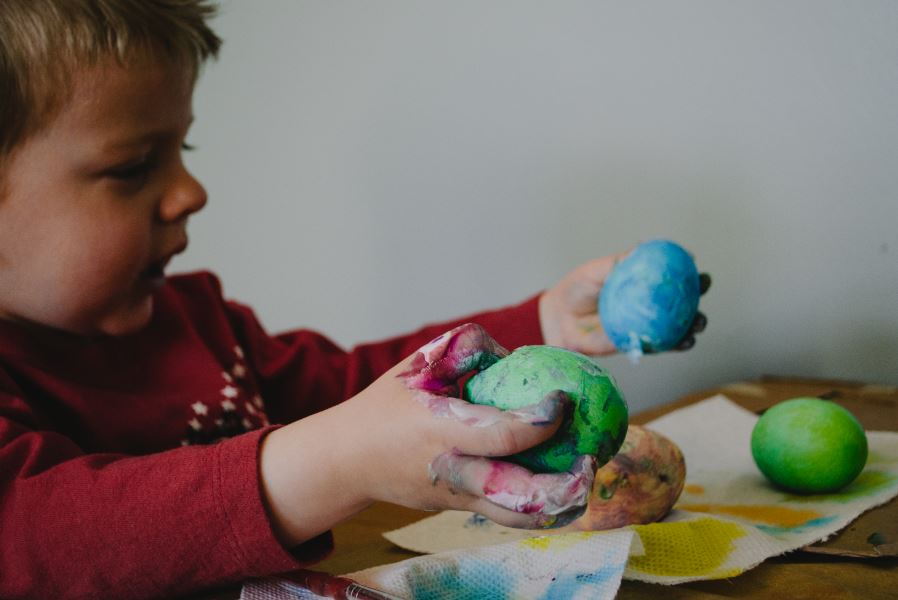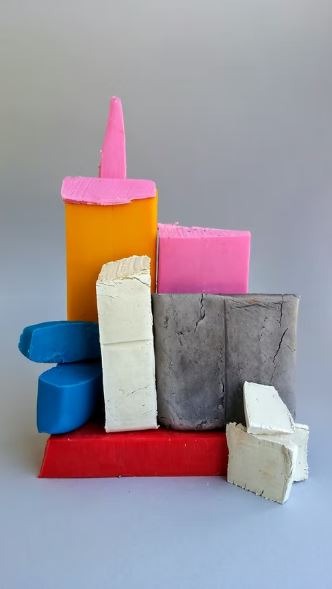For young children to create arts and crafts projects at home, Play-Doh is a modeling material. The item was initially created in Cincinnati, Ohio, in the 1930s as a wallpaper cleaner. In the middle of the 1950s, Play-Doh was revised and promoted to Cincinnati schools. In 1956, Play-Doh was demonstrated at a conference for educators, and prestigious department stores opened retail accounts.
In 1957, Play-Doh sales were boosted by advertisements that appeared on well-known children’s television programs. Since its introduction to the toy market in the middle of the 1950s, Play-Doh has produced a sizable amount of supplemental goods, including the Fun Factory.
History
Noah McVicker of Cincinnati-based soap manufacturer Kutol Products invented the non-toxic, non-staining, reusable modeling compound that became known as “Play-Doh.” It was a supple, putty-like substance. It was created at Kroger Grocery’s request because they needed a product that could remove coal tar from wallpaper.
The market for wallpaper cleaning putty shrank significantly after World War II because of the switch from coal-based home heating to natural gas, which reduced internal soot, and the introduction of washable vinyl-based wallpaper. Joe McVicker, McVicker’s nephew, joined Kutol to prevent the company from going out of business. Kay Zufall, a teacher at a nursery school, had seen a newspaper article about creating artwork with wallpaper cleaning putty, and Joe McVicker was Kay’s brother-in-law. Because her students liked it, she convinced Joe and Noah McVicker to produce it as a toy for kids. Play-Doh was given its current name by Zufall and her husband; Joe McVicker and his uncle Noah had originally proposed the name, Rainbow Modeling Compound.
When Joe McVicker brought Play-Doh to a conference for companies that make school supplies, Woodward & Lothrop, a department store in Washington, DC, started selling the substance. To produce and market Play-Doh, the McVickers established the Rainbow Crafts Company in 1956. In 1957, chemist Dr. Tien Liu reduced Play-Doh’s salt content, and Play-Doh ads were telecast on Romper Room, Ding Dong School, and Captain Kangaroo. Sales of Play-Doh surpassed $3 million in 1958.
Play Dough Ingredient
Hasbro, the company currently in charge of making Play-Doh, claims that it is primarily made of a combination of water, salt, and flour, but according to the 2004 US patent, it also contains water, a starch-based binder, a retrogradation inhibitor, salt, lubricant, surfactant, preservative, hardener, humectant, fragrance, and color.
The compound has a smooth feel thanks to a petroleum additive, and borax stops mold growth. People who are allergic to wheat gluten may experience allergic reactions from Play-Doh because it contains some wheat. It is not meant to be consumed.
Ice Cream Parlor Play-Doh Idea
To the play dough area, add ice cream bowls, spoons, and scoops. Cone-shaped folds can be made with poster board or thick brown paper. I have a sweet set of spoons and ice cream bowls that I purchased from Dollar Tree. Each year I see them there.
Astronaut Play-Doh Craft
With play dough, kids can create the moon or planets. Children can launch rocks representing asteroids and tiny plastic astronaut figures at the moon.
Cookie Play Dough Cutter
On construction paper, outline each cookie cutter shape. Cover it with either clear contact paper or lamination. I accomplished this by stamping each cookie cutter on white construction paper after dipping them in a stamp pad. Children cut out shapes from play dough using cookie cutters, then match those shapes to those on the mat.
Play-Doh Cookie Math
Making math toys out of play dough for sensory-sensitive kids might encourage them to learn. Using circles of paper with numbers on them are attached to a cookie sheet using clear contact paper. Kids use play dough to make cookies, count out the right number of chocolate chips (brown beads), and arrange them on a specific number on the cookie sheet.
Flower Pots Play Dough
Include flower pots made of plastic or clay and a selection of silk flowers. Children insert the flowers into the play dough that has been poured into the pots. You can either leave them alone to play with them or label the pots with numbers and ask kids to count out the right number of flowers to put inside.
Birthday Cake Using Play-Doh
Making enormous birthday cakes out of colored dough is enjoyable, and your child can go all out on the decorations. To make a cake with colored layers, start by making a thick pancake with one color of dough, and then stack more and more on top. Your child can make long, wavy sausages that they can use to decorate the cake in the same way they would with piped icing. In addition to birthday candles, you could also give them plastic figurines or letters to use as decorations.
Box Play Dough Scenes
An old cardboard box’s top and front can be cut off and painted to resemble a farmyard. Make numerous farm animals out of dough, then arrange them in the farmyard. The same concept could be used to create a variety of scenes, including jungles, grass with bugs, and moon craters.
Play Dough Fossils
Make a collection of natural artifacts, such as shells, twigs, and leaves, and then help your child create dough fossils. Simply form a ball out of the dough, then flatten it with your hand. To leave an impression, gently press your treasure into the ground. Try turning the entire piece upside down and carefully peeling the dough off the back if you are having trouble removing the object without destroying the remaining dough.
Play Dough Blocks
By demonstrating to your child how to create blocks that stack on top of one another, you can transform dough into a building material. Allow your child to use their imagination while painting, adding toothpicks, skewers, and ice block sticks. It’s amazing the kinds of structures and constructions they can make.
Christmas Decorations Using Play-Doh
Using dough, your child can create beautiful Christmas decorations. Simply roll out the dough to a thickness of 5 mm, and then cut it into Christmas-themed shapes with cookie cutters. Use a pencil to make a hole in the piece’s top, then bake it. Your child can paint each piece of the decoration and even add glitter for a genuine Christmas effect once it has dried and become hard and cold. Colorful ribbons should be inserted through the hole and hung from the tree.


